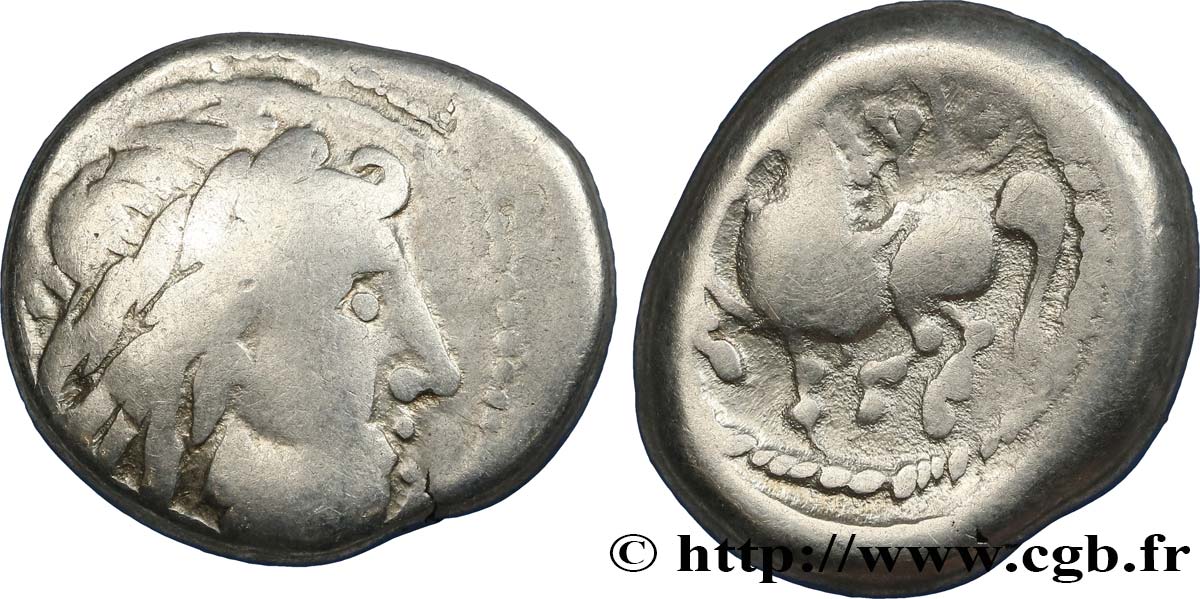E-auction 230-153958 - bga_424747 - DANUBIAN CELTS - IMITATIONS OF THE TETRADRACHMS OF PHILIP II AND HIS SUCCESSORS Tétrarachme “type de Dachreiter”
You must signin and be an approved bidder to bid, LOGIN TO BID. Accounts are subject to approval and the approval process takes place within 48 hours. Do not wait until the day a sale closes to register. Clicking on « bid » constitutes acceptance of the terms of use of cgb.fr private e-auctions.
Bids must be placed in whole Euro amounts only. The sale will start closing at the time stated on the item description; any bids received at the site after the closing time will not be executed. Transmission times may vary and bids could be rejected if you wait until the last second. For further information ckeck the E-auctions F.A.Q.
NO BUYER'S FEE.
NO BUYER'S FEE.
| Estimate : | 150 € |
| Price : | 44 € |
| Maximum bid : | 66 € |
| End of the sale : | 11 September 2017 14:05:30 |
| bidders : | 8 bidders |
Type : Tétrarachme “type de Dachreiter”
Date: c. IIe-Ier siècles AC.
Metal : silver
Diameter : 22 mm
Orientation dies : 1 h.
Weight : 12,32 g.
Rarity : R2
Coments on the condition:
Monnaie sur un flan un peu court et épais, de forme ovale, avec un droit centré mais un revers décentré. Patine grise
Catalogue references :
Obverse
Obverse legend : ANÉPIGRAPHE.
Obverse description : Tête barbare laurée et barbue à droite.
Reverse
Reverse legend : ANÉPIGRAPHE.
Reverse description : Cavalier casqué au pas à gauche ; le casque se termine par un annelet.
Commentary
Ce tétradrachme est très proche du bga_163885.
Ce type est directement inspiré par le “type au rameau” .
Ce type est directement inspiré par le “type au rameau” .








 Report a mistake
Report a mistake Print the page
Print the page Share my selection
Share my selection Ask a question
Ask a question Consign / sell
Consign / sell
 Full data
Full data















